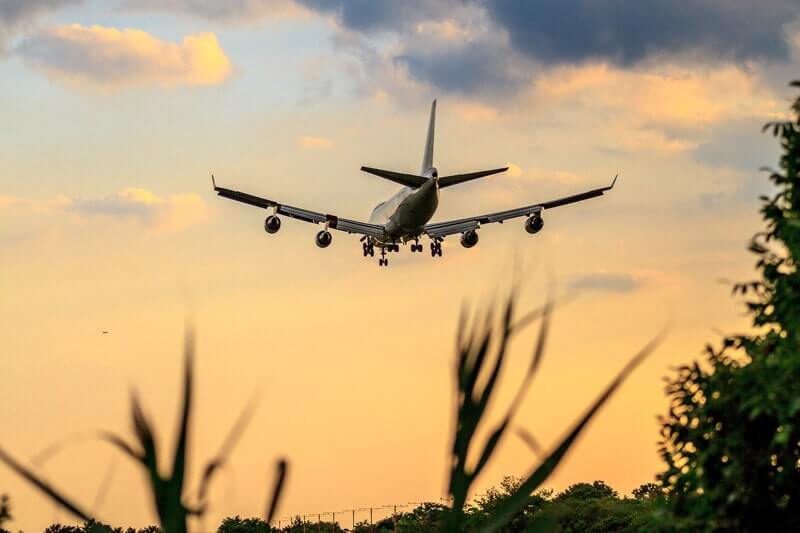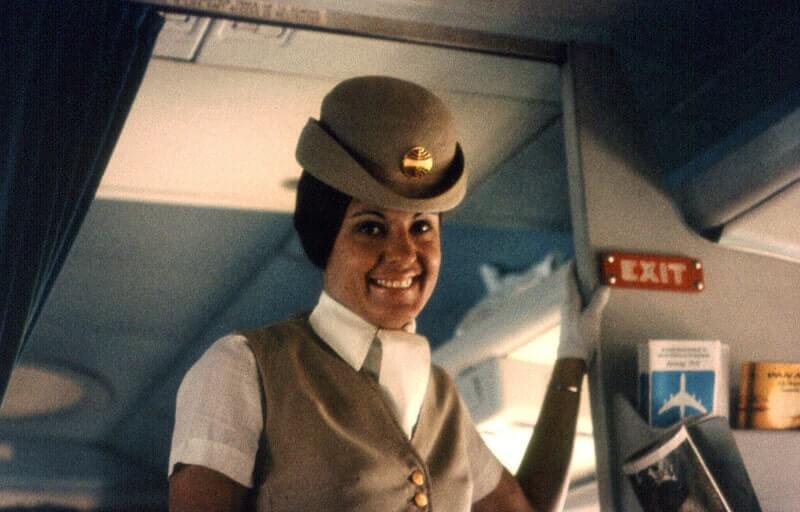John reflects on the changes in the aviation industry over the decades
A tumbling torrent of trivia is swirling around the old grey matter right now. However, a jumble of unconnected thoughts is not what one wants when one is trying to come up with a theme for one’s monthly dissertation.
Must I wear a face mask when doing my shopping? Yes. But what if I go to the shop to buy a mask and they won’t let me in because I’m not wearing a mask? I bet the cleverclogs in Whitehall and Westminster haven’t considered that problem.
Will there be a memorial service for Vera Lynn? Probably. But at the moment, don’t know where, don’t know when.
The Treasury is making all sorts of announcements and quoting all sorts of figures. But what, exactly, is the difference between a million, a billion, and a trillion?
I looked that up online. The difference is mind-blowing. A million seconds is more or less eleven and a half days. A billion seconds, 31 years and nine months. A trillion seconds – and this really cleared away the mental cobwebs – is 31,710 years.
 So, having managed to throw out all that clutter, I come to the crux of this month’s columnar offering. The demise of the Boeing 747.
So, having managed to throw out all that clutter, I come to the crux of this month’s columnar offering. The demise of the Boeing 747.
British Airways has announced that it is retiring its fleet of 747s, the largest in the world. It is the end of an era.
It seems like only yesterday that I toddled off to Heathrow to watch the first Jumbo Jet arrive. In fact it was January 1970 and to say that we were agog is to put it mildly. For months the papers had been full of stories of how the airport had to install special ramps and walkways for this monster of a craft.
The pundits forecast that each time one landed it would be like having to cope with the arrival of a cruise ship (this, remember, was long before cruise ships morphed into huge floating resorts). The same pundits used the word ‘revolutionary’ with gay abandon (this, remember, was a time when gay abandon was not a euphemism).
In truth, nobody knew exactly how it would turn out, other than that the world of aviation would never be the same again. But at that stage of its development the world of aviation was continually changing anyway.
So on that January morning I pitched up at Heathrow with an army of journalists and aviation experts and chaps from industry and banking and public relations and anyone else with a valid excuse to be there.
It was an unforgettable moment as that huge piece of metal approached the runway, hovering, it seemed, for ages before touching down and taxiing to the newly built walkways waiting to welcome the 324 passengers whom Pan Am had brought from New York.
Just think of it. Just think of 324 passengers, when previous planes had carried mere handfuls. And just think of the size of that aircraft compared to her predecessors. ‘Revolutionary’ doesn’t begin to describe it.
Between them, Pan Am and Boeing had cooked up a nice publicity plan. They had invited some 300 journalists, aviation types, travel folk, financiers, and others to come on board for a little joyride, after the plane had been spruced up and before it was due to take on its passengers for the journey back to New York.
 So, on we trooped, accepted our glasses of champagne and waited for our little trip. And waited. And waited.
So, on we trooped, accepted our glasses of champagne and waited for our little trip. And waited. And waited.
And, as we waited, we remembered that Boeing had had some problems with the Pratt and Whitney engines which powered their new monster. Nothing too serious, you understand. But enough to cause a few problems. As was happening now.
By chance, I was sitting next to a couple of chaps from Rolls Royce. From the bit of Rolls Royce that made aircraft engines. Understandably, they were thoroughly enjoying the situation, and, as the champagne flowed they regaled us eager hacks with a thoroughly untrue, but beautifully apt, story.
Did we know, they asked rhetorically, that Mr. Pratt and Mr. Whitney were prominent in other fields of endeavour before coming together to make aircraft engines?
Mr. Pratt (or it may have been Mr. Whitney) made his fortune in waste disposal. Mr. Whitney (or it may have been Mr. Pratt) was a pioneer in irrigation systems, responsible for all the windmills of the Wild West, pumping water up into cattle troughs.
What was the relevance of this information? They waited until someone asked that inevitable question then announced that a Pratt and Whitney engine was, as a result, no more than a small windmill in a large dustbin.
A silly joke. Nevertheless, in the years that followed, whenever I went on board a 747, I was reassured to see the Rolls Royce logo on the engine rather than that of Pratt and Whitney.
 Pan Am was a very smart airline. Glamorous, even. In those early days, they did not put passenger seats in the dome above the front, First Class, section. They put in tables for four and invited First Class passengers to climb a spiral staircase and eat their dinner in proper fashion.
Pan Am was a very smart airline. Glamorous, even. In those early days, they did not put passenger seats in the dome above the front, First Class, section. They put in tables for four and invited First Class passengers to climb a spiral staircase and eat their dinner in proper fashion.
Pristine white tablecloths, damask napkins, fine wines. Caviar, Lobster Thermidor, a joint of beef or lamb, brought to your table on a trolley and carved by the chief steward. And, it almost goes without saying, the best of company.
I once sat at a Pan Am table opposite Walter Kissinger, brother of the more famous Henry. To my right was an elderly gentleman named Fruehauf, whose family had made a fortune building the huge trailers you see being hauled around the highways of the USA. On my left was a chap from Texas whose name I forget. He was flying home after negotiating the rights for his company to drill for oil in the North Sea.
It was heady stuff. I should not, on reflection, have mentioned, at the end of the meal, that I was a journalist, as their gossip had been fascinating. They opted to have their coffees downstairs.
A final thought about the 747. It is linked to the first powered flight made by Orville Wright at Kitty Hawk on 17 December 1903. It lasted 12 seconds and covered 120 feet.
If the tail fin of a Boeing 747 had been his take off point, he would still be in Economy Class when he landed.











